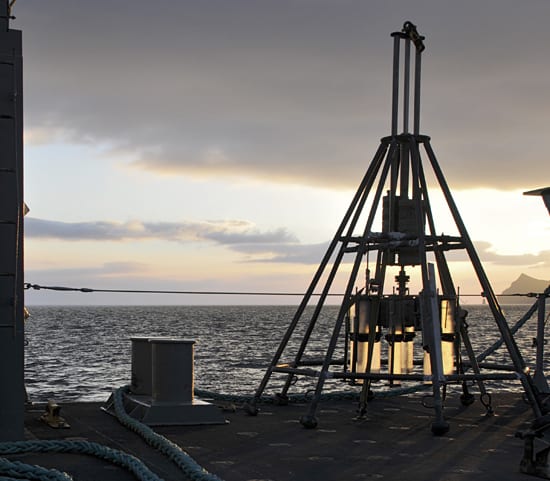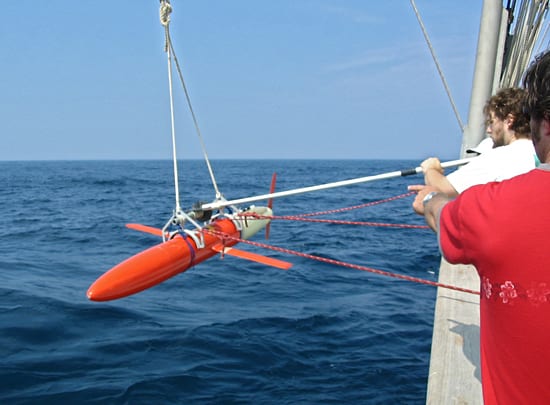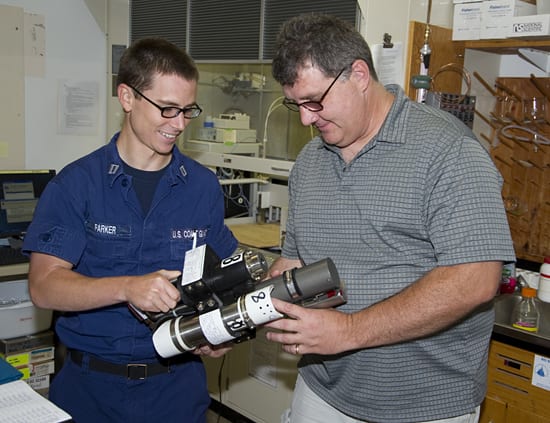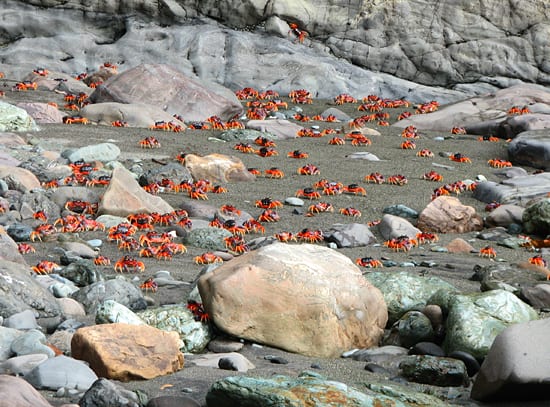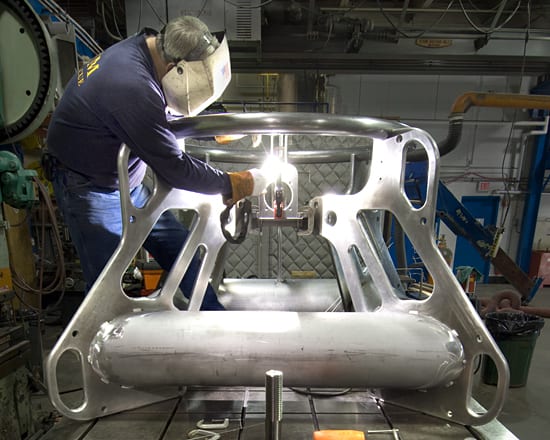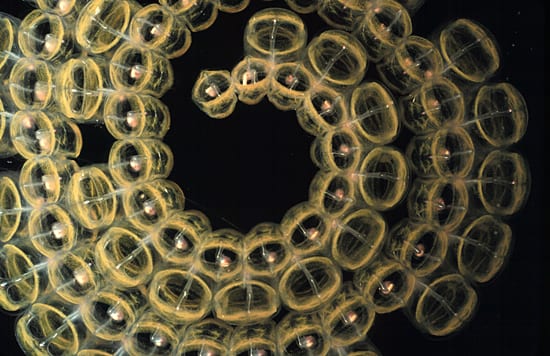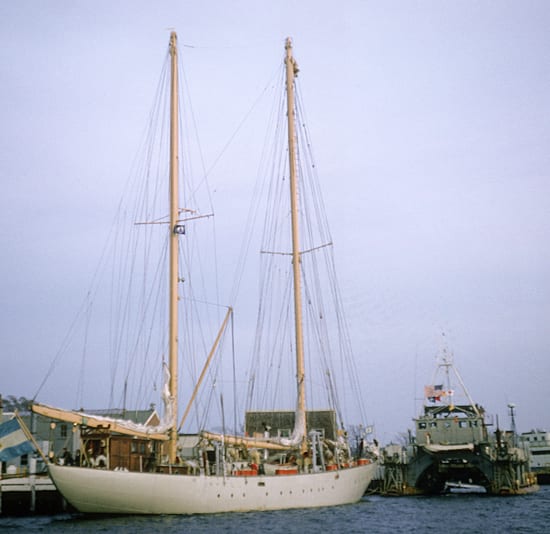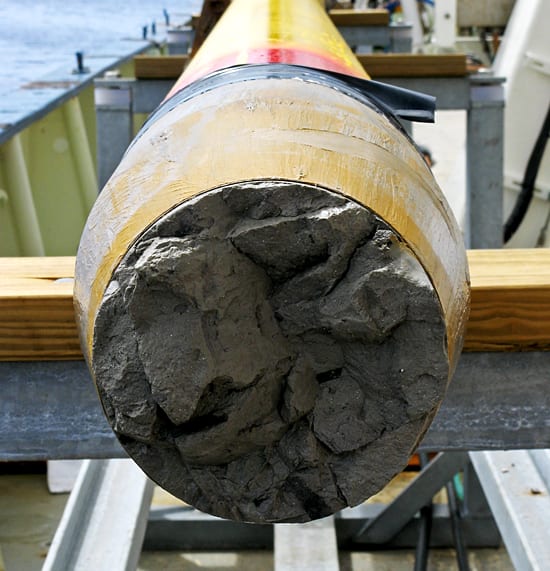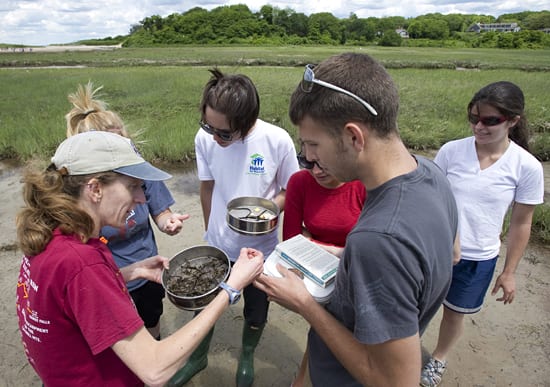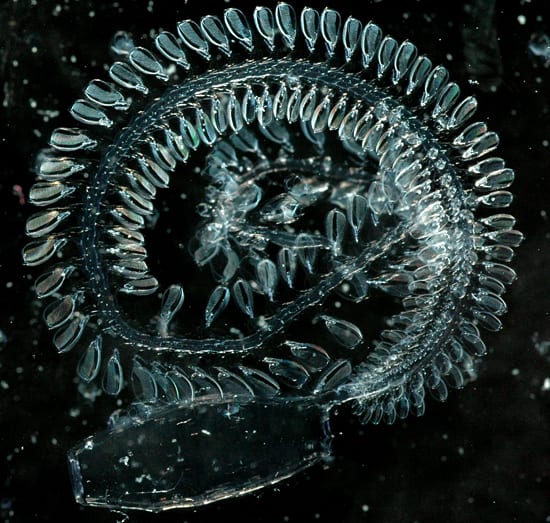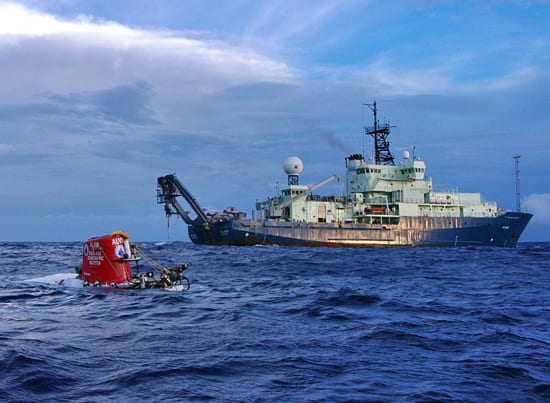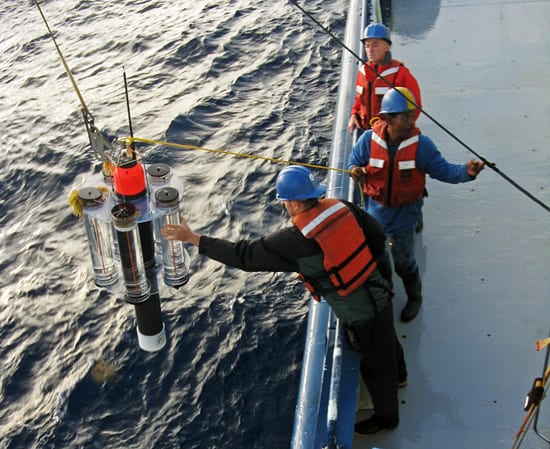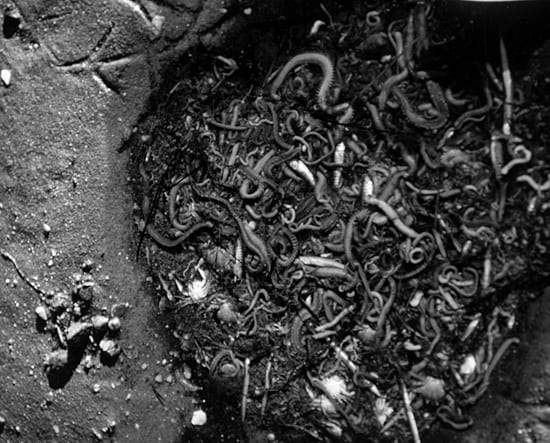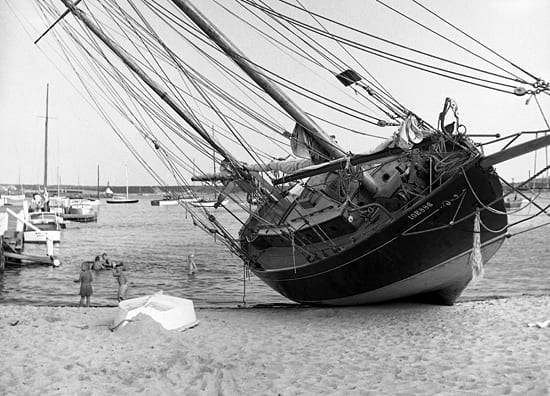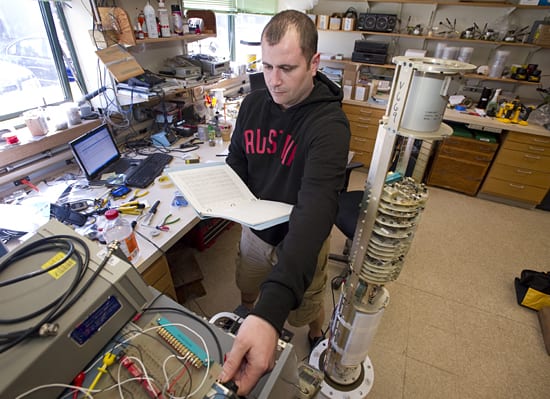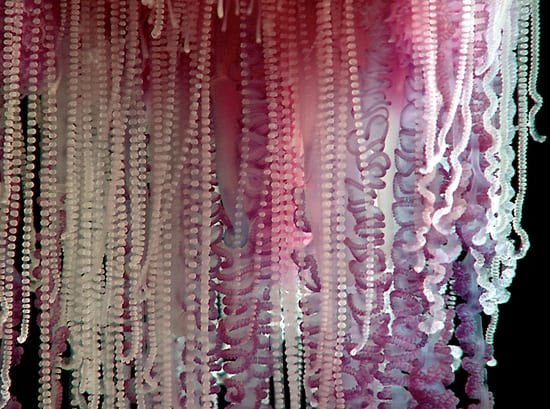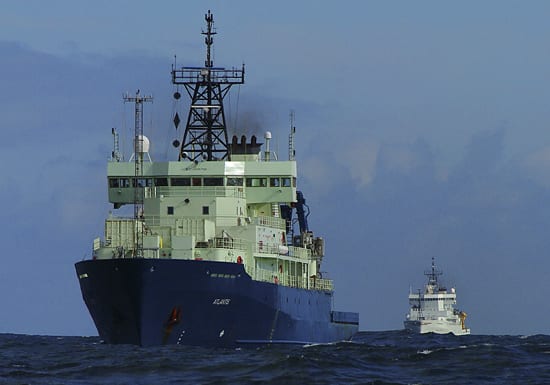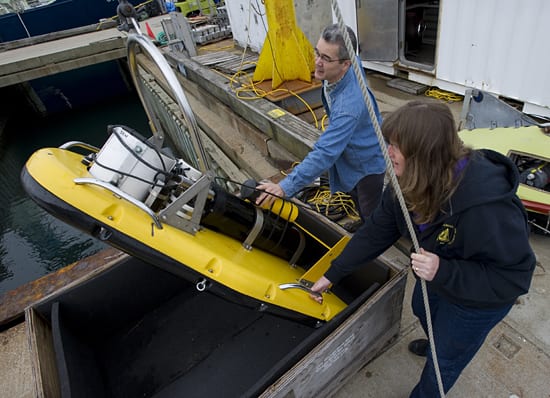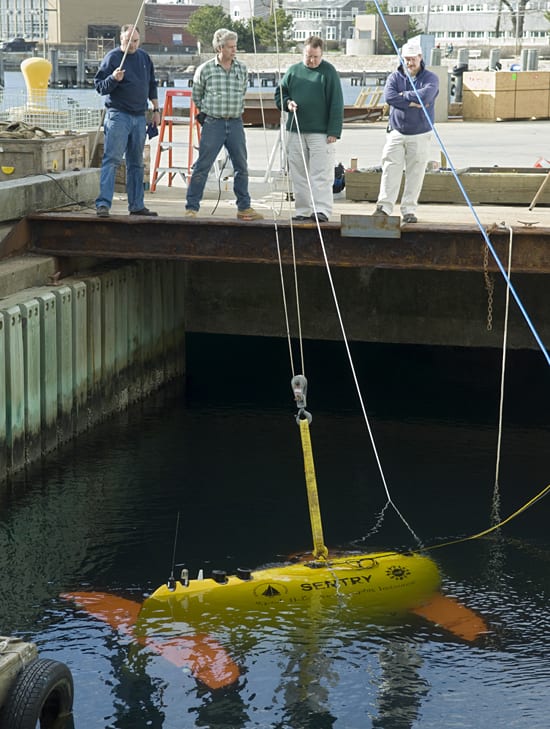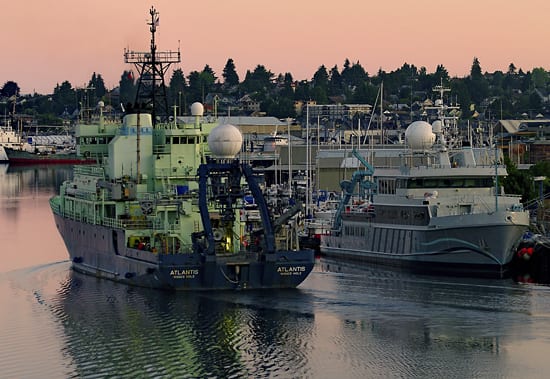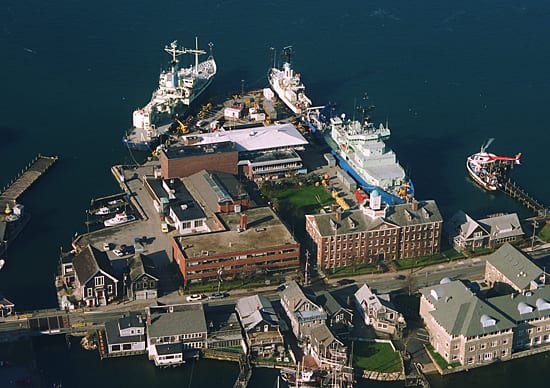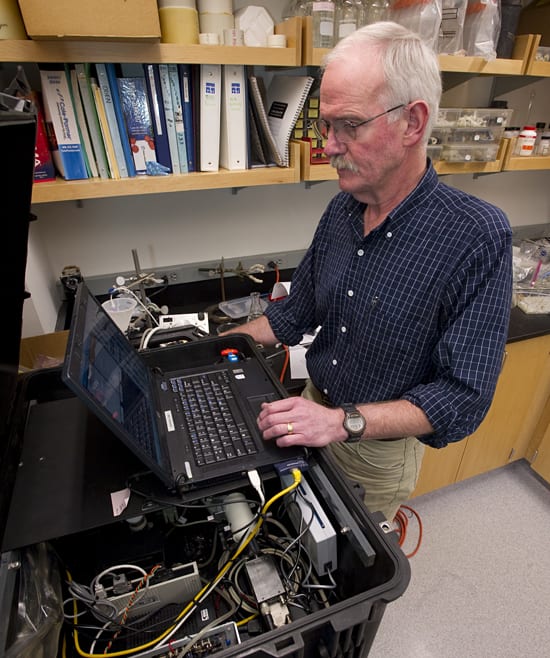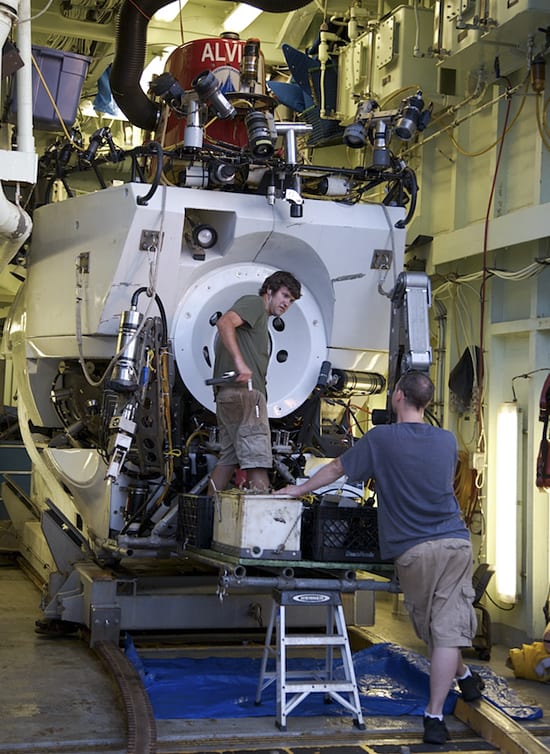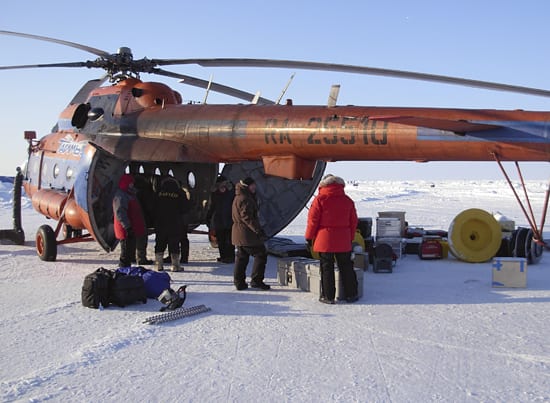Multimedia Items
Dusk over the Bering Sea
At rest: A multicorer, an oceanographic sampler that drives cylindrical tubes into the seafloor to take multiple sediment samples at once, sits on the deck of the R/V Thomas G.…
Read MoreSpray glider studies the Gulf spill
Graduate students in the MIT/WHOI Joint Program practice deploying a Spray glider. A Spray glider, a sensor-equipped autonomous underwater vehicle, was recently deployed to the Gulf of Mexico to gather…
Read MoreOil sample arrives at WHOI
WHOI researchers are making major contributions to efforts to monitor and characterize effects of the Deepwater Horizon oil spill in the Gulf of Mexico. In June, WHOI researchers took a…
Read MoreA torrent of crabs
After a six-month dry season in coastal Panama, the first rains bring masses of bright red land crabs boiling out of their burrows in the forest and scrambling across the…
Read MoreA whale of an anchor
WHOI welder Tony Delane works on the mooring anchor framework for a multifunction node (MFN) and buoy system that will help researchers monitor the activity of North Atlantic right whales,…
Read MoreGolden spiral
Salps are planktonic filter-feeders — each one a tireless vacuum continuously clearing phytoplankton cells from the sea by filtering water through a mucus net as it swims. These marine animals…
Read MoreEl Austral and Lulu
El Austral, formerly RV Atlantis, at the Woods Hole Oceanographic Institution (WHOI) dock with RV Lulu. Atlantis was the first WHOI research vessel and the first ship built specifically for…
Read MoreGoing deep
Muddy sediment from beneath the seafloor pokes out of one of the first long cores collected in 2007 by the then-new long corer sampling system on the research vessel Knorr.…
Read MorePanning for worms
Research specialist Stace Beaulieu (at left), Summer Student Fellow Eric Rozell, and other students examine invertebrates they sieved from the sand and sediments in the tidal channel at Woodneck Beach…
Read MoreMaking ocean life count
Dolioletta gegenbauri, a planktonic colonial tunicate that filters phytoplankton to eat, is about two inches (5 centimeters) long. This species was one of many collected in deep water during a Census of…
Read MoreFeeling GRUVEE
The Human Occupied Vehicle Alvin and the R/V Atlantis work in the waters off Galapagos Islands in April 2010 during the Galapagos Ridge Undersea Volcanic Eruptions Expedition (GRUVEE). A team…
Read MoreCatching ‘snow’ in the ‘twilight zone’
Clindor Cacho of WHOI (middle), and Brad Issler (left) and Stephen Bell (right) from the Bermuda Institute of Ocean Sciences, recover a Neutrally Buoyant Sediment Trap (NBST) after a mission…
Read MoreOily tidal pools
Oil washed into the West Falmouth marsh and tide pools after a 1969 spill, with disastrous consequences for these small marine animals in a tidal pool. Though the marsh now…
Read MoreBeached
A boat lies on a beach in Vineyard Haven Harbor after Hurricane Carol, a category 3 storm, hit the New England coast in August 1954. Hurricane season in the Atlantic…
Read MorePrep time
Brian Hogue, an engineering assistant with the Sub-Surface Mooring Operations Group, performs a pre-deployment check on a Vector Averaging Current Meter (VACM) in preparation for a September 2010 cruise. The…
Read MoreDangerous beads
It looks like a curtain of Mardi Gras beads hung in a doorway, but fish should choose another door! These are a Physalia’s (Man-o’-War jelly’s) tentacles hanging beneath its ship-shaped…
Read MoreFancy meeting you here
Research vessel Atlantis, which is operated by WHOI, and R/V Thomas G. Thompson, which is operated by the University of Washington, became neighbors for a short time during the late…
Read MoreReady for action
WHOI scientist Tim Stanton and research associate Cynthia Sellers return a broadband imaging sonar to its storage box after putting it through its paces in the test well on the…
Read MoreChemical-sniffing bloodhound
WHOI engineers and scientists (from left to right) Andy Billings, Rod Catanach, Chris German, and Al Deuster test the autonomous underwater vehicle (AUV) Sentry off the dock in 2008. With…
Read MoreShips passing in the night
The Research Vessel Atlantis leaves port in Lake Union, Seattle, en route to Victoria, Canada. The ship on the right, M/V Alucia, was originally the Institut français de recherche pour…
Read MoreRare triple junction
Arrayed around the WHOI dock in Woods Hole, Mass. are the three ocean-going research vessels WHOI operates—(clockwise) Knorr, Oceanus, and Atlantis. The ships are part of the U.S. research fleet,…
Read MoreSafer drinking water
WHOI Biologist Scott Gallager leads a team developing a new tool to keep drinking water safe, by watching how single-celled organisms (protozoans) react to toxins in the water. Toxins typically…
Read MoreAlvin turnaround
DSV (Deep Submergence Vehicle) Alvin dives to the sea floor almost every day of the year in the service of ocean science. In the relatively few hours between dives, a…
Read MoreObserving the Arctic
Arctic climate research takes extra effort from people and instruments alike. In April 2010 WHOI engineers Jeff Pietro and Kris Newhall loaded buoys specially designed for the ice onto a…
Read More
